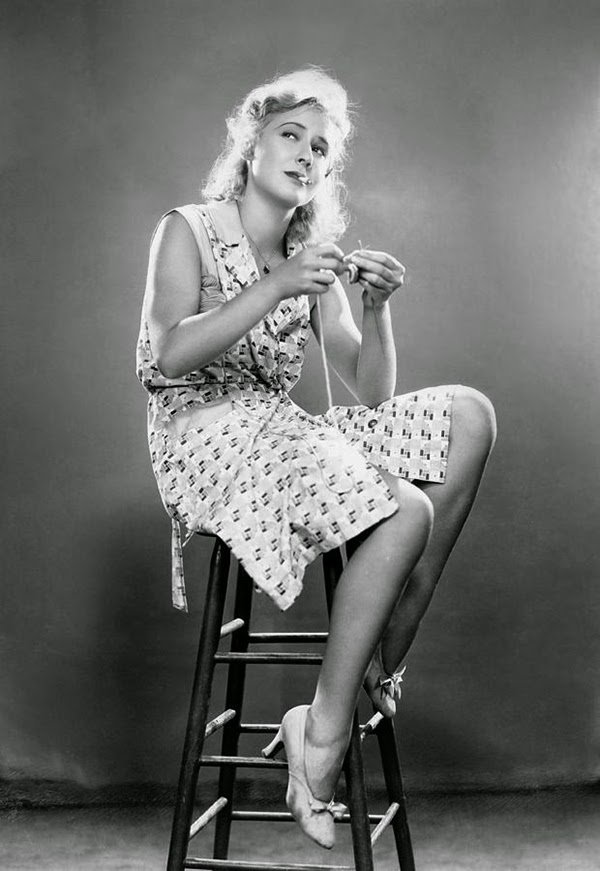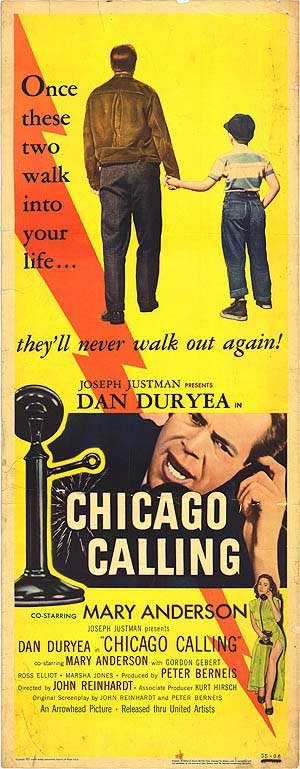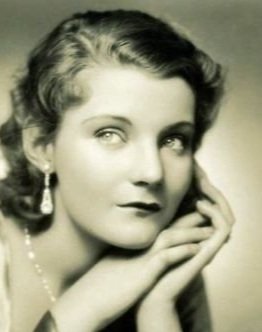
Mae Clarke: An Honest Woman
There is a certain look of wary, contained bitterness that you see on women’s faces in movies from the early thirties. Their eyes become veiled; the women seem to retreat inside themselves defensively, tasting memories of hurt and humiliation, of men who made them feel dirty and how they had to keep on smiling and flirting so they could pay the rent on their drab hall rooms and buy their automat coffee. It’s the look of the chorus girl who has learned to protect herself by shutting down the gates, even while wiggling in her scanties. Barbara Stanwyck carried it throughout her long career, like an eternally livid scar; “bubbly” Joan Blondell wore it quietly; and in Waterloo Bridge (1931) it’s branded on the face of Stanwyck’s one-time roommate, Mae Clarke.
Waterloo Bridge opens with a shorthand summation of a chorus girl’s life. It’s the all-hands-on-deck finale of a fluffy musical revue on the last night of its run. The camera pans past the interchangeable faces of the chorines in their platinum wigs and sparkly tricorn hats, and comes to rest on Mae Clarke, as Myra Deauville. She throws up her arms and gives an open-mouthed laugh, then lapses into exhausted boredom, then switches on the faux exuberance again, then yawns. Throughout the film she keeps doing this: putting on her game “Hello, big boy” act and then flinging it aside with furious disgust. Director James Whale doesn’t bother with transitions, but conveys the whiplashing ups and downs of his heroine’s life through blunt cuts. We see her backstage in her bra, receiving a white fox stole from an admirer; in the next scene, out of work for two years, she’s wearing the stole low around her décolletage, standing outside the theater with a fellow hooker looking for pickups. (The setting is World War I, but when Myra says hopefully, “I’ll get a job soon,” 1931 audiences must have foreseen the worst.)
Spotting a prospective john, the friend primps and smiles flirtatiously, while Myra turns on him with a defiant yet seductive scowl; a sullen, defensive stance that she assumes throughout the film. She suffers from incurable decency, which becomes a scalding torment when she meets an innocent young doughboy who has no idea that she’s a prostitute. She brings Roy (Kent Douglass) to her flat, intending to pluck him for the back rent she needs to satisfy her sour-faced landlady. But it’s too easy: when the sweet, boyish soldier pleads with her to accept the money, she abruptly drops the good-natured frankness she’s been charming him with and turns hard and caustic, hating him because she hates herself for tricking him. She’s so stung with hurt pride that she has to lash out and hurt someone else. Preparing to go out on the streets after sending him away, she stares at her hard face in the mirror, dabbing make-up on the rigid mask that barely conceals the tired, angry sadness beneath.
Waterloo Bridge is the only film that reveals the breadth of Mae Clarke’s talent. In other movies she played nice, open-faced girls or mean, petulant golddiggers. As Myra she is a kaleidoscope of confused emotions. Her best scene comes when Roy tells her he loves her: she turns away, hunched as though against a cold rain, her eyes narrow and tense. This is the final insult from life: for her dream guy to come along too late, when she feels unworthy of him. Leaving, he kisses her hand, and reacting to this tribute she passes through exaltation, anxiety, and rage—growling as she forces herself to cast it aside. She’s too honest to grab the expedient of letting a man make “an honest woman” out of her. But we know she loves him, because in the next scene she’s trying to knit him a pair of socks, sitting at the breakfast table with her hair piled on her head, a cigarette planted in her mouth, mangling the stitches.
The worst is yet to come: well-meaning oblivious Roy tricks her into visiting his posh family in the country. They’re kind and welcoming in that self-satisfied upper-class way bound to cause excruciating discomfort in someone like Myra. Roy’s mother (Enid Bennett) is polite, complacent and deadly. Watching her sweetly confide to Myra that she doesn’t want her son to marry a chorus girl, but that she knows she has nothing to fear from such a “fine” person, is almost unbearably painful. Reduced to abject guilt, Myra confesses her true profession and pitifully sobs, “I just wantcha to know, I could’ve married him…”

The Chiseler Interviews Jonathan Rosenbaum
The Chiseler’s Daniel Riccuito discusses pre-Code talkies, noir and leftist politics with one of America’s leading film critics.
DR: We share a common enthusiasm for early talkies. Do you have any favorite actors, writers or storylines relating to the period’s ethnic, often radically left-wing, politics? I’m thinking of the way that, say, The Mayor of Hell suddenly busts into a long Yiddish monologue. Or movies like Counsellor at Law and Street Scene present hard Left ideas through characters with Jewish, Eastern European backgrounds.

Annals of Censorship #1
Mr. J. L. Warner,
Warner Bros. Studios,
Burbank, California
Dear Mr. Warner:
We have read the final script of your production, WILD BOYS OF THE ROAD, and have given it very careful consideration. It seems to us that it contains several major problems to which some further consideration should be given both from the standpoint of the Code and censorship.
First we feel that the characterization of Aunt Carrie's residence as a house of prostitution is very questionable under the Code and dangerous with regard to official censorship. Consequently, it would be wise to change the nature of these scenes radically and indicate, if possible, that Aunt Carrie runs a speakeasy or that she is implicated in any other kind of a racket which might make her liable to arrest. If such a change were made, all the story necessities would be saved and, at the same time, a very dangerous situation would be avoided.

Helen Chandler: Picon Citron
In the original or at least the first American sound version of Dracula (1931), Bela Lugosi spends a sizable portion of the film after Helen Chandler’s blood, and his pursuit of her seems more than a little misguided. Was there ever a screen performer who looked as snow white as Chandler, as anemic, as small and bloodless? She was a petite blond, a wraith, and her blue eyes were almost white in their starkness, too, so that she always seemed to be looking inward instead of out, and those small inward eyes of hers could have an unnerving quality that suits the buggy but creaky horror of this Dracula. Chandler speaks in a strained, chirping voice, and she’s very intense. Who is she, and why does she stare like that?
She was born in South Carolina, and her Southern accent comes out sometimes on screen, especially in her last film, Mr. Boggs Steps Out (1938), where her distinctively belle-like volatility makes her seem kin to Miriam Hopkins. In the 1920s, Chandler built herself an impressive career on Broadway, playing with John Barrymore in Richard III, Lionel Barrymore in Macbeth, and then as Hedvig in Ibsen’s The Wild Duck and as Ophelia in a modern dress Hamlet. Hedvig goes blind and Ophelia goes mad, and both of these extremes must have suited Chandler’s birdlike imperturbability, her sense that she lived entirely in her own world. She was a leading lady for John Ford in Salute (1929), and then she made an impact as one of the lost people on board a floating ship of the dead in Outward Bound (1930), which looks as creaky today as Lugosi’s Dracula does.
The prime year for Chandler in films was 1931. After Dracula, she played opposite Ramon Novarro in Jacques Feyder’s Daybreak, a movie where she’s asked to do an extended drunk scene: “I want another one!” she cries, when it’s clear that she’s had more than enough booze, and then when Novarro obliges, Chandler insists on “a full one.” And so when Chandler played Nikki in her finest film, William Dieterle’s The Last Flight, she had some practice with drinking on screen for one of the all-time best boozing movies and one of the all-time best romantic group movies.

Three on a Match
The title and premise of Three on a Match suggest an ensemble film, but don’t be fooled. This is Ann Dvorak’s movie, and the finest showcase for her avid, feverish energy. She was twenty years old and blazing her way through her first year as a star, starting with her electrifying turn as Tony Camonte’s insatiable sister in Scarface. Slender and elegant, with a refined beauty, Dvorak always seemed to be looking for trouble. “Somehow the things that make other women happy leave me cold,” she says in Three on a Match, explaining the gnawing dissatisfaction that a devoted husband, a cherubic son and a life of luxury can’t assuage.
The other two on the match are Joan Blondell and Bette Davis, but they are stuck with tepid roles, and even Warren William (as Dvorak’s husband) is uncharacteristically virtuous and bland. All raw nerves and dangerous luster, Dvorak makes her haughty, self-immolating character not only more interesting but more sympathetic than the nice women who profit from her fall.
Seduced by a penniless playboy (Lyle Talbot, leaving his usual trail of slime) she shacks up with him in a hotel suite, neglecting her child, and slides rapidly from champagne parties to drug-addicted poverty. The movie really starts to get good when the debt-ridden Talbot kidnaps Dvorak’s son. In a noirish sequence, they all hole up in a squalid apartment, guarded by a trio of goons led by Humphrey Bogart, who nastily mocks Dvorak’s cocaine withdrawal. Three on a Match crystallizes her daredevil glamour, while also offering a brisk, punchy warning about what happens to girls who play with matches.
by Imogen Sara Smith

